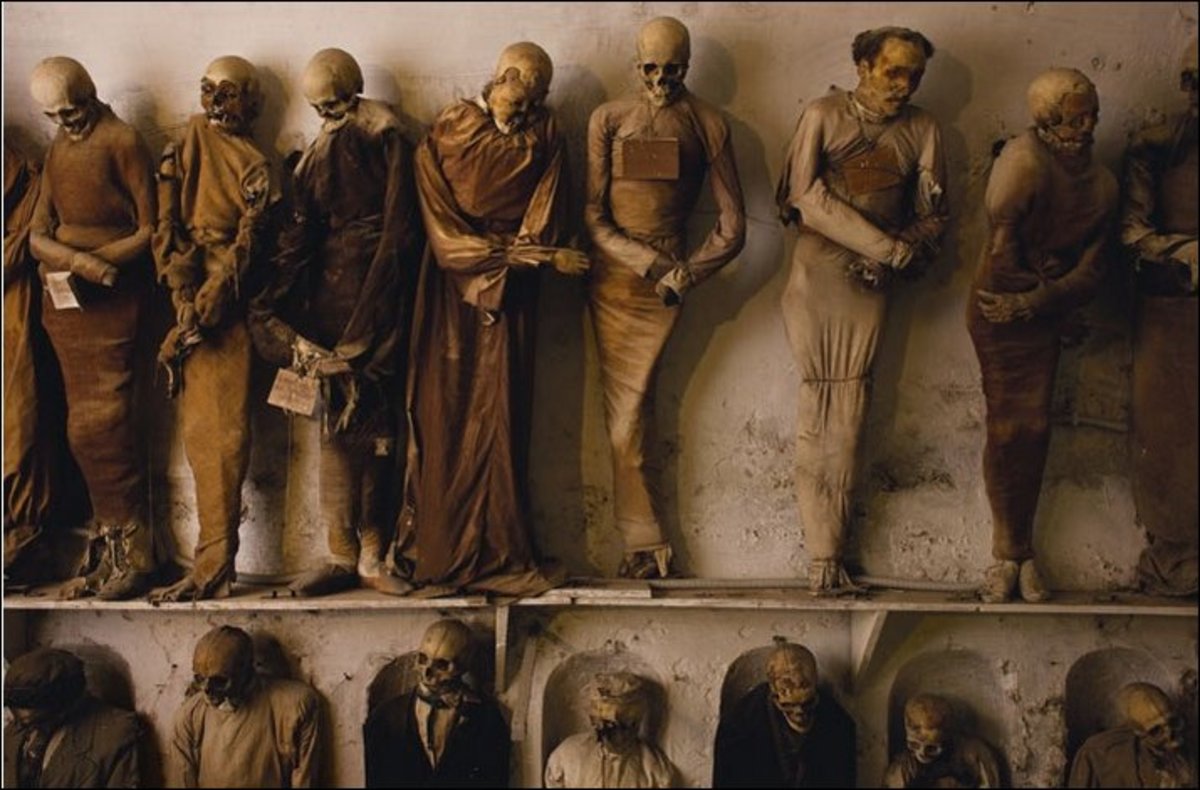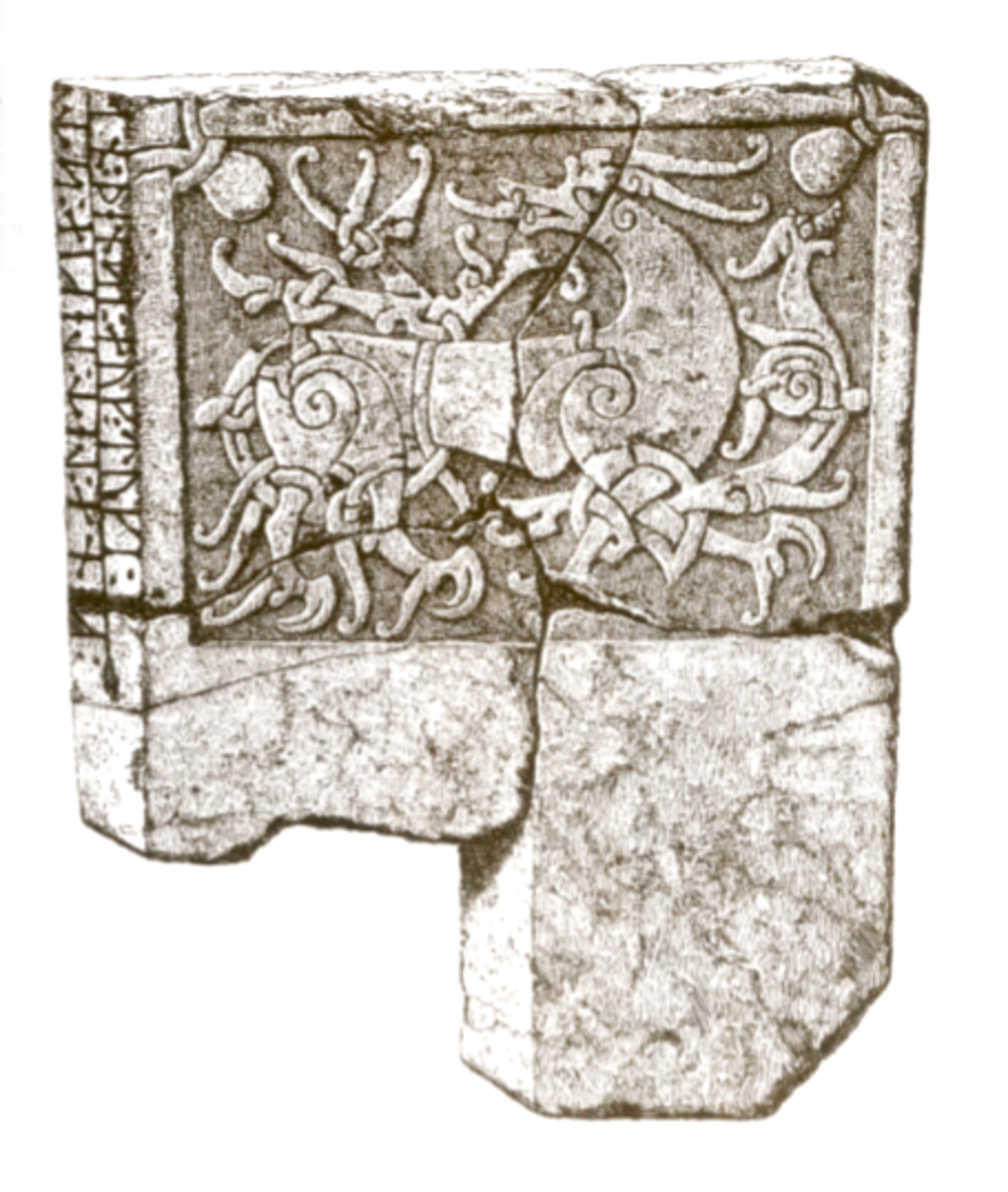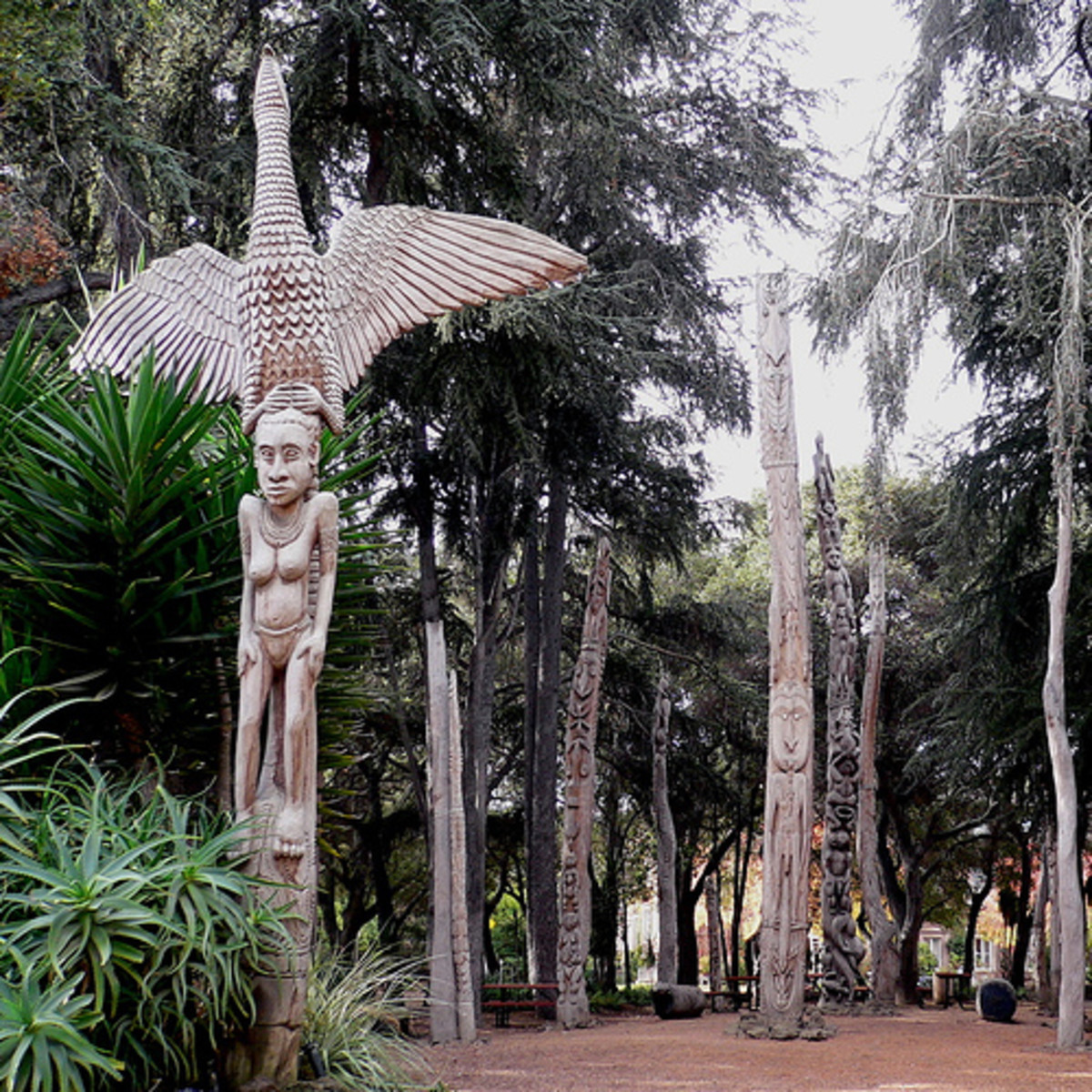Oak Island - The Mystery of the Money Pit: Mystery files.
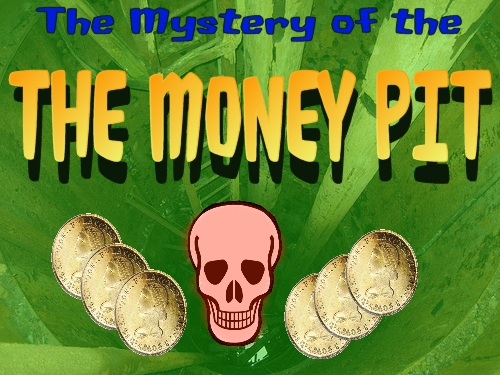
The Mystery of Oak Island
Legend says that there is a vast treasure buried on Oak Island, Nova Scotia. For over two hundred years men have tried and some have died in their efforts to unearth it.
All were defeated by the ingenious - some say devilish - construction of what has become known as "The Money Pit". All the pit has ever revealed are cunning traps, flood channels and secret codes.
Is it true that it contains a treasure hoard belonging to the infamous Captain Kidd? Is it possible that the undoubted engineering genius who built it has long ago retrieved what it contained? The mystery remains.
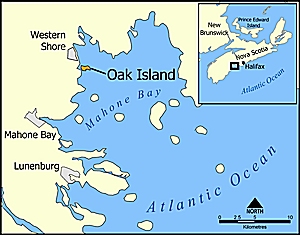
Oak Island - X marks the spot.
Oak Island is a small blob of land bathing in the waters of Mahone Bay on the southern coast of Nova Scotia. It was said that strange lights would appear on the island at night, and this gave rise to the legend that the place was haunted
It is an unlikely place for a real-life treasure hunt, and yet it has attracted a seemingly never-ending stream of gold-diggers willing to risk all in the search for riches. Despite the fact that not one speck of treasure has ever been brought out of the pit, treasure seekers continue to return to the site, bringing with them ever increasingly sophisticated machinery in their attempts to wrest the pit's secrets out of the earth.
In the 200-something years since the pit's discovery, it has been estimated that well over one and a half million dollars has been spent on finding the alleged treasure - But nothing has ever been found.
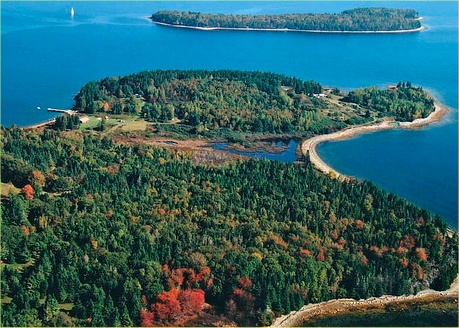
The money pit is discovered
It was the summer of 1795 and a young 16 year-old Daniel McGinnis had paddled his canoe across the bay in order to explore the mile-long Oak Island (so called because of it's thick population of Red Oaks).
He pulled his boat ashore and went into the woods to explore. Before long, he found a clearing, and noticed an ancient Oak standing in the middle of the open space with one of it's branches cut short.
The shortened stump bore the unmistakable marks of ropes and tackle. Directly below was a bowl shaped depression in the ground some 12 feet in diameter. Around the clearing, a lot of wood had been cut down. It was pretty obvious that someone had gone to a lot of trouble to bury something - and Daniel wanted to find out what it was.
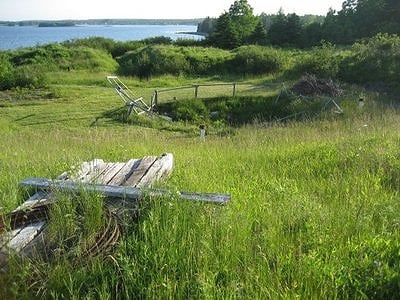
Daniel returned with two friends, John Smith aged 20 and Anthony Vaughan 13. Armed with picks and shovels they began to dig. The signs were promising. They discovered that they were digging down into a circular clay-lined shaft that clearly showed the marks of previous picks.
At a depth of four feet, they discovered a layer of flag-stones. The stone was not native to Oak Island. At a depth of ten feet, they came upon a platform constructed of six-inch-thick oak logs which extended the full width of the pit and each end was firmly embedded into the clay walls.
At a depth of twenty feet they found another Oaken platform identical to the first, and at 30 feet, yet another! Unable to progress further with the tools they had, they returned to the mainland and decided that they would try to find more help
It was nine years later, in 1804, before they made their second attempt. By that time, one of the friends, John Smith, had bought the area surrounding the site. They had managed to interest a Mr. Simeon Lynds, a man of means, to form a syndicate to "assist the pioneers in the search after the treasure and to complete it".
The excavation resumed. They came upon a succession of Oak platforms - this time sealed with putty - at intervals of 40, 50, 60, 70 and 80 feet depth. At a depth of 90 feet, they discovered a large flat stone three feet long and one foot wide. The stone was also not native to the area, and cut into it were strange letters and figures.
The treasure seekers could not understand what the figures meant, and did not seem to think that they were significant. The stone was taken away, and set into the fireplace of a house that John Smith had built on the island. The stone was then forgotten about for half a century.
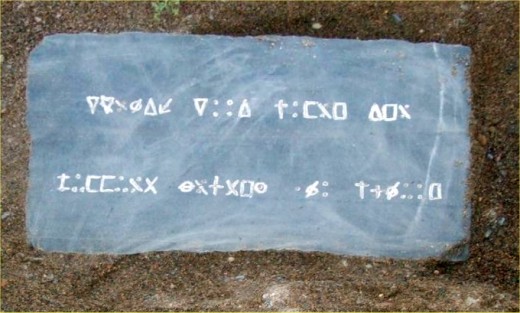
As nightfall fell, the diggers stopped work for the night, convinced that their treasure was only a few feet further down. On their return they were shocked to discover the pit had flooded with water to within 33 feet of the top.
Despite bailing with buckets, and later a pump, they were not able to reduce the level of water. Eventually, they ran out of capital and had to abandon the attempt. "Had it not been for the various mischiefs of nature played on us" wrote John Smith "we would by now, all of us, be men of means"
He could not know that his problems were not caused by "mischiefs of nature", but, it was to be revealed later, booby traps cunningly designed into the pit, which would cause them to flood and collapse if any unauthorised attempts were made to recover whatever was buried there.
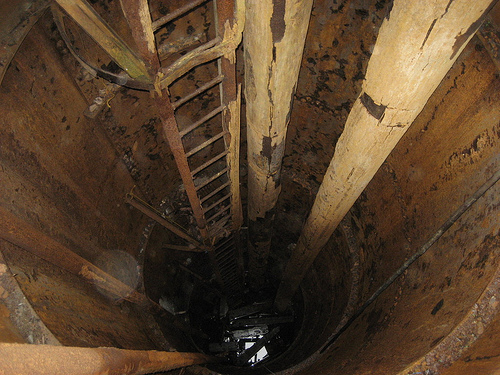
Some time around 1860, the strangely marked stone that was recovered from the pit was taken to be displayed in a bookshop in Halifax as part of a fund raising effort to finance a new assault on the pit. The markings upon it were then apparently deciphered by a professor of languages, who interpreted them to read " Ten feet below two million pounds". The stone mysteriously disappeared in 1935.
Many further attempts were mounted by individuals and syndicates to crack the pit's seemingly unbeatable defences, but all were defeated by the ingeniously designed flooding systems that were built into the pit, and some were to pay with their lives.
Despite the use of increasingly sophisticated pumping and drilling machinery, and techniques such as the sinking of paralell shafts to the main one - The booby-trap flooding system always prevented access to whatever it was that was hidden there.

Who buried the Treasure?
Rupert Furneaux, the author of the authoritative book "The Money Pit Mystery" (1972), dismissed ideas such as Captain Kidd, and pirates being responsible for the pit. Only highly trained engineers could have constructed such an ingenious piece of construction with it's associated flooding system.
Having sifted through the evidence, Furneaux concluded that it was probably constructed by British engineers, on the orders of Sir Henry Clinton, the British Commander-in-chief during the American Revolutionary War, as a repository for the vast sums of money in his keeping. The soldier engineers, he believed, came from Halifax, some forty miles away, and it was probably their lights, as they worked, that gave rise to the legend that the island was haunted.
Furneaux is of the opinion that the pit was essentially a sophisticated decoy to occupy the attentions of looters whist the money was actually hidden in a much more easily accessed place nearby. He also believes that the money must have been recovered shortly afterwards, otherwise there would have been a large discrepancy in the British Army's accounts.
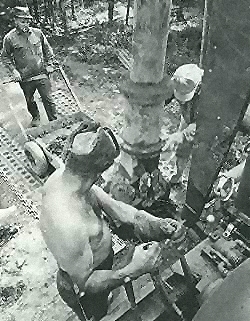
The quest continues
Not everyone agrees with Furneaux's assessment however, and groups searching for the treasure continue to appear regularly.
In November 1971, a group called the "Triton Alliance Company" announced that they had drilled a large shaft down over 200 feet into the pit.
A submarine video camera that was lowered down the shaft was said to have discerned a faint outline of what looked like several chests or boxes. Divers were then lowered down the shaft to search for the chests, but found... nothing.
It seems that the pit, despite two hundred years of attempts, millions of dollars and the loss of five lives, is not quite ready to give up it's secrets just yet... and possibly never will be.



More Mystery Files
- Foo Fighters: Mystery Files
WWll pilots from both sides believed that they were secret weapons sent by their enemies. These strange vehicles flew along with the aircraft - stuck to them like glue and were impossible to shake off - Yet they never harmed a single plane - They wer - Gloria Ramirez - The Toxic Lady : Mystery Files
19th of February 1994 - A woman is brought into the emergency department with breathing difficulties. A bloodsample is taken which seems to release a strange overpowering odour - within minutes virtually everyone in the emergency room has been render - The Ghost of Flight 401: Mystery Files
The Flight Engineer turned to the Second Officer and said "You don't need to worry about the pre-flight, I've already done it". The Second Officer became alarmed - He realised that the Flight Engineer he was speaking to was dead! - He had crashed on - X-Ray Eyes : Mystery Files
We would all love to have X-Ray vision - Think of the things you could do! But is it really possible to look straight through people and things - do X-Ray eyes exist in reality? Read this report before you make up your mind.


